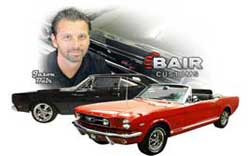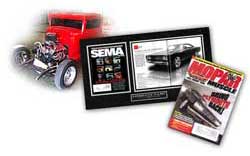1970 PLYMOUTH SUPERBIRD
1970 Plymouth Roadrunner Superbird. Big Hemi Project: Complete engine and transmission rebuild. Add Gear Venders overdrive. Go through all of the mechanicals.
The short-lived Plymouth Road Runner Superbird was a highly modified version of the Plymouth Road Runner with well known graphics and horn. It was the factory’s follow up stock car racing design for the 1970 season to the Dodge Charger Daytona of 1969, and incorporated many engineering changes and modifications (both minor and major) garnered from the Daytona’s season in competition on the track. The car’s primary rival was the Ford Torino Talladega, which in itself was a direct response to the Mopar aero car. It has also been speculated[by whom?] one motivating factor in the production of the car was to lure Richard Petty back to Plymouth. Both of the Mopar aero cars famously featured a protruding, aerodynamic nosecone, a high-mounted rear wing and, in the case of the Superbird, a horn which mimicked the Road Runner cartoon character.
Developed specifically for NASCAR racing, the Superbird, a modified Road Runner, was Plymouth’s follow-on design to the Charger Daytona fielded by sister company Dodge in the previous season. The Charger 500 version that began the 1969 season was the first American car to be designed aerodynamically using a wind tunnel and computer analysis, and later was modified into the Daytona version with nose and tail. The Superbird’s smoothed-out body and nosecone were further refined from that of the Daytona, and the street version’s retractable headlights (made of fiberglass) added nineteen inches to the Road Runner’s original length. The rear wing was mounted on tall vertical struts that put it into less disturbed air thus increasing the efficiency of the downdraft that it placed upon the car’s rear axle. For nearly 30 years the mathematic formula used to determine the exact height of the enormous wing was thought to be a highly guarded Chrysler secret. However, in the 1990s a retired Chrysler project engineer admitted publicly that the height was determined in much simpler fashion: it was designed to provide clearance for the trunklid to open freely. The rear-facing fender scoops were to hide cut outs in the hood. These cutouts were thought to allow wheel clearance due to the lowered height of the car for NASCAR, but in reality the NASCAR tire was wider than the cutout and the scoop itself. Therefore there was no room for tire clearance. The scoop were actually for ventilating trapped air from the wheel wells in order to facilitate reduced under fender air pressure and lift. Ground clearance was 7.2″.
NASCAR’s homologation requirement demanded that vehicles to be raced must be available to the general public and sold through dealerships in specific minimum numbers. For 1970, NASCAR raised the production requirement from 500 examples to one for every two manufacturer’s dealers in the United States; in the case of Plymouth, that meant having to build 1,920 Superbirds. Due to increasing emissions regulations, combined with insurance hikes for high performance cars, 1970 was its only production year.
“Superbird” decals were placed on the outside edges of the spoiler vertical struts featuring a picture of the Road Runner cartoon character holding a racing helmet. A smaller version of the decal appears on the driver side headlight door. Superbirds had three engine options: the 426 Hemi V8 engine, the 440 Super Commando with a single 4-barrel carburetor, or the 440 Super Commando Six Barrel with three two-barrel carburetors. Only 135 models were fitted with the 426 Hemi. As the 440 was less expensive
to produce, the “Street” version of the 426 Hemi engine used in competition was homologated by producing the minimum number required.
On the street, the nose cone and wing were very distinctive, but the aerodynamic improvements hardly made a difference there or on the drag strip. In fact, the 1970 Road Runner was actually quicker in the quarter mile and standard acceleration tests due to the increased weight of the Superbird’s nose and wing. Only at speeds in excess of 90 mph (140 km/h) did the modifications show any benefit.
Chrysler memos of September 1969 show that the Sales Programming staff was preparing to handle 1,920 winged Plymouths for 1970, but published figures say as many as 2,783 were built. The current figure generally accepted is 1,935 SuperBirds built and shipped to United States dealers, with anywhere from 34 to 47 allegedly heading towards Canada. The engine option question is again a sticky one, although the most frequently seen numbers report 135 426ci. Hemi SuperBirds and 716 440ci. Six-Pack editions, with the remainder powered by 440ci. 4bbl. motors. It is believed that over 1,000 Plymouth SuperBirds exist today.























































































